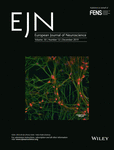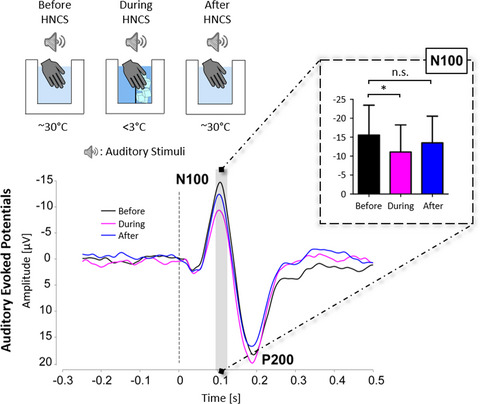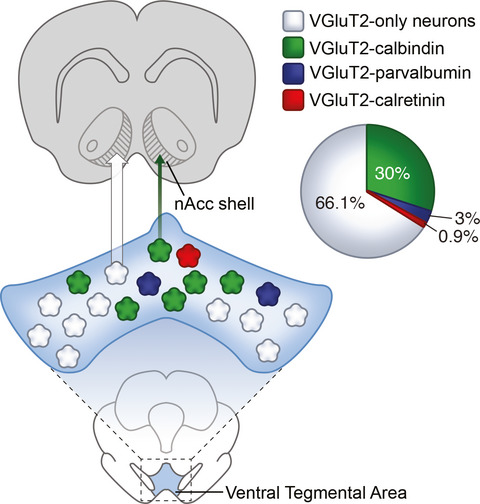Journal list menu
Export Citations
Download PDFs
ISSUE INFORMATION
CLINICAL AND TRANSLATIONAL NEUROSCIENCE
Is the dopaminergic loss associated with gait and postural impairments in subjects with Parkinson's disease at different motor stages?
- Pages: 3889-3895
- First Published: 06 August 2019
In vitro evidence consistent with an interaction between wild-type and mutant SOD1 protein associated with canine degenerative myelopathy
- Pages: 3896-3905
- First Published: 23 July 2019
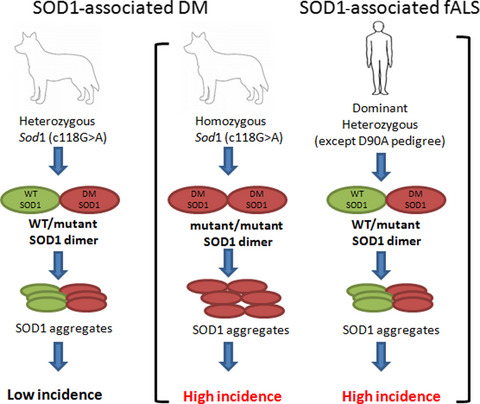
Canine degenerative myelopathy (DM) develops at a high incidence in homozygotes for the c118G>A SOD1 mutation and low incidence in heterozygotes. In vitro, wild-type and DM mutant SOD1 can interact, possibly as dimers and can form aggregates. Wild-type SOD1 can form dimers with various mutations of SOD1-associated fALS. However, unlike DM the majority of fALS with SOD1 mutations are heterozygous except the D90A mutation which is inherited in both recessive and dominant form.
The P429L loss of function mutation of the human glycine transporter 2 associated with hyperekplexia
- Pages: 3906-3920
- First Published: 01 August 2019
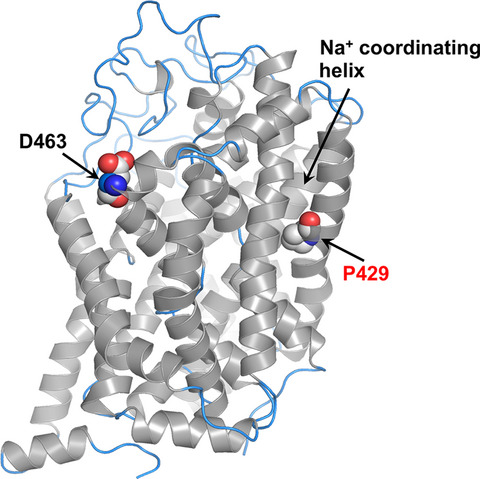
The novel identified hyperekplexia mutant in the glycine transporter 2 GlyT2P429L results in loss of function. Moreover, the mutant is associated with significantly decreased expression levels. The mutation leads at the structural level to a disruption of the integrity of the α-helix 5 and thus conformational changes localized in close proximity to the sodium binding site of the transporter.
Cognitive functioning in glioma patients is related to functional connectivity measures of the non-tumoural hemisphere
- Pages: 3921-3933
- First Published: 01 August 2019

In patients with glioma, a less segregated organization of the contralesional hemisphere (reflected by lower local efficiency) is associated with better reaction time scores. Better cognitive flexibility and better complex attention scores are associated with a better spread of information over the contralesional hemisphere through mutually interconnected hubs (reflected by higher assortativity). These results underline the importance of the contralesional hemisphere to cognitive performance.
Intense and sustained pain reduces cortical responses to auditory stimuli: Implications for the interpretation of the effects of heterotopic noxious conditioning stimulation in humans
- Pages: 3934-3943
- First Published: 14 August 2019
Voluntary tic suppression and the normalization of motor cortical beta power in Gilles de la Tourette syndrome: an EEG study
- Pages: 3944-3957
- First Published: 17 August 2019

We measured EEG in Gilles de la Tourette patients (GTS) and healthy controls. We tested whether tic inhibition influences the activity of the sensorimotor cortex during a motor task. GTS showed lower levels of beta modulation over the sensorimotor cortex during the execution of the task. This abnormal pattern returned to be normal during tic voluntary inhibition. We demonstrated that voluntary tic inhibition normalized the beta EEG rhythm of the sensorimotor cortex.
Subtle changes of gray matter volume in fibromyalgia reflect chronic musculoskeletal pain rather than disease-specific effects
- Pages: 3958-3967
- First Published: 26 August 2019
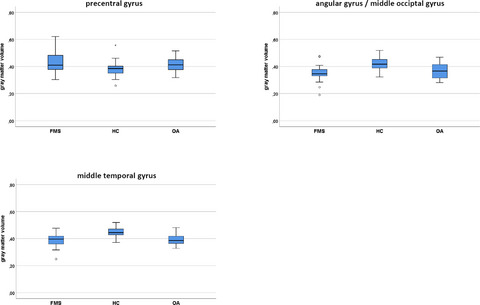
In fibromyalgia syndrome (FMS), altered gray matter volume (GMV) has been shown but with missing disease specificity. Regional voxel-based morphometry showed increased GMV in the precentral gyrus and decreased GMV in the angular and middle temporal gyrus in patients with FMS and another pain group in comparison with healthy controls. Since no GMV differences between both pain groups were obvious, cortical changes in FMS are not disease-specific but reflect alterations of chronic pain in general.
SYSTEMS NEUROSCIENCE
The Ventral Tegmental Area has calbindin neurons with the capability to co-release glutamate and dopamine into the nucleus accumbens
- Pages: 3968-3984
- First Published: 19 June 2019
Mitotic activity, modulation of DNA processing, and purinergic signalling in the adult rat auditory brainstem following sensory deafferentation
- Pages: 3985-4003
- First Published: 20 July 2019
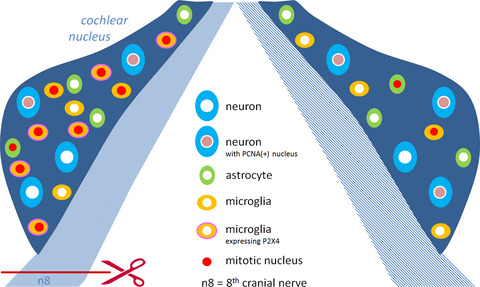
Unilateral cochlear ablation causes mitosis confined to microglia within the affected cochlear nucleus. Many dividing microglia start expressing the purinoceptor P2X4. The absence of dying cells indicates a stable number of neurons and astrocytes through this period of tissue reorganization. While neurons neither die nor proliferate, they change processivity of DNA polymerases, indicating plastic responsiveness on the level of gene management.
Relation of koniocellular layers of dorsal lateral geniculate to inferior pulvinar nuclei in common marmosets
- Pages: 4004-4017
- First Published: 25 July 2019
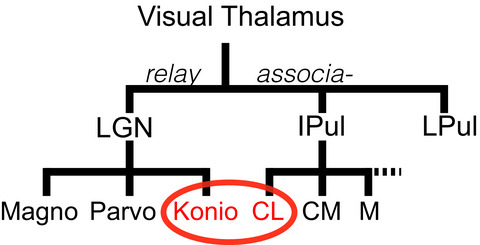
Primate visual thalamus is traditionally segregated into a relay nucleus (dorsal lateral geniculate nucleus, LGN), and association nuclei including inferior pulvinar (IPul) and lateral pulvinar (LPul). We show in the marmoset brain that koniocellular layers of LGN and the central lateral (CL) division of IPul show common patterns of calbindin immunoreactivity and connectivity with the visual cortex, implying a functional congruity and anatomical continuity.
How can methylprednisolone work on epileptic spasms with malformation of cortical development?
- Pages: 4018-4027
- First Published: 09 August 2019
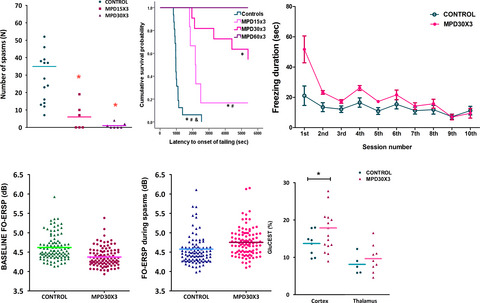
Using a rat model of infantile spasms with malformation of cortical development, we could prove the dose-dependent efficacy of methylprednisolone on spasms. Moreover, multiple doses of methylprednisolone lead to in vivo neurochemical changes with increased glutamate concentration in the cortex and electrophysiological changes in fast oscillations in the neocortex with reduced spasms susceptibility. These in vivo neurochemical and electrophysiological changes caused by methylprednisolone can be more therapeutic evidence of steroids in neurological disorders, including epilepsy.




